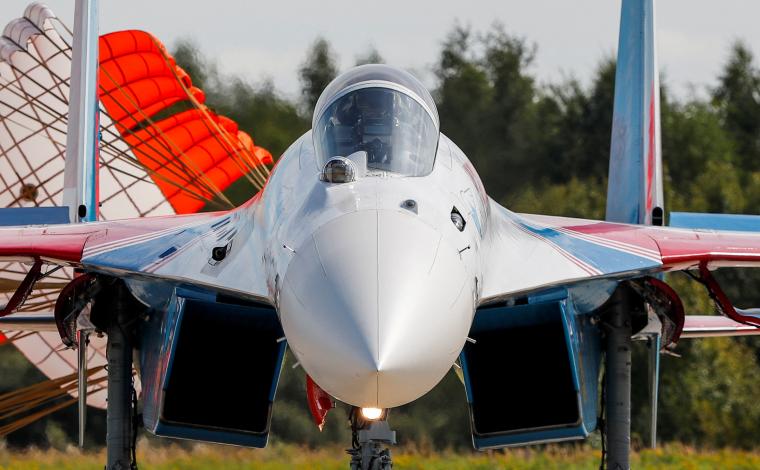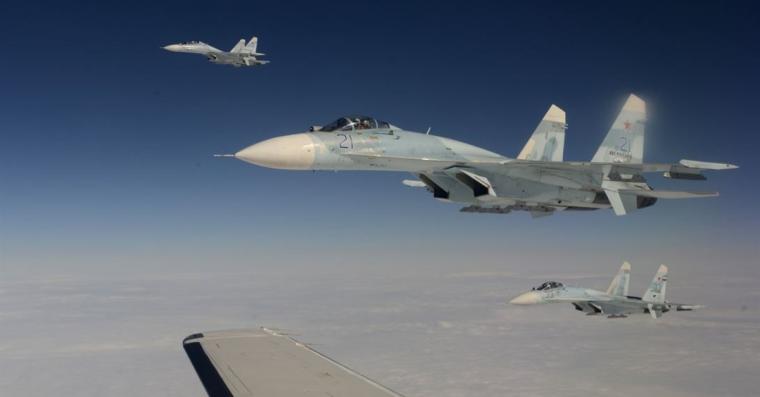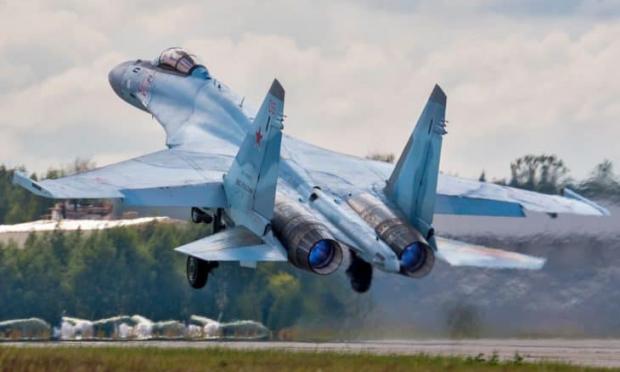Iran has finalized the deal to buy Su-35 fighter jets from Russia, according to Tehran's permanent mission to the UN. Information about the number of aircraft and delivery time is not disclosed.
The mission said the fighters are technically approved by Iran. After October 2020, when the ban on the sale of conventional weapons to Iran was lifted under UN Security Council Resolution 2231, Tehran finally decided to acquire them.
If this information is correct, the Russian military-industrial complex will gain billions of dollars, Iran will have a powerful tool to counter Israel, and US influence in the Middle East will be reduced.
The Biden administration calls the close ties between Moscow and Tehran "damaging" and says the Iranians are already training on the new planes. White House spokesman John Kirby pointed out that "these fighters will significantly strengthen the Iranian air force compared to its neighbors in the region."
In fact, according to the New York Times, Iran unveiled a new underground air base called Eagle 44. It is located on a mountainside 160 km north of the Strait of Hormuz.

Satellite images were reviewed by Chris Biggers, a former US government imagery analyst and senior director of mission applications at HawkEye 360, a company that monitors radio frequency emissions around the world.
In his analysis, Biggers pointed to two warplane models, one of which is the size of an Su-35. It is located in the area where the construction is in progress. "Probably, they are used to evaluate aircraft maneuvers in the underground complex and may indicate that Su-35s will be based here," the American expert said.
According to a foreign media outlet, Shahriar Heydari, a member of the National Security and Foreign Policy Committee of the Islamic Advisory Council, said that the Su-35s will arrive from Russia to Iran in early 2024. "We have ordered defense systems, missiles and helicopters from Russia and most of these weapons will soon enter the country," he said.
The commander of the Iranian Air Force, Hamid Vahedi, also emphasized that in addition to the Su-35, Tehran plans to buy Su-30 fighters.
It is worth noting that Russian officials have not yet commented on the statement of Iranian representatives. However, the probability that we are not talking about some kind of speculation, but about the real possibility of an agreement is high. If this is confirmed, it will mean a major achievement for the Russian arms trade system, as well as significant profits for domestic warplane manufacturers. It could be a billion dollar deal.
Iran is not yet able to independently produce generation 4++ aircraft, which, like the Su-35, can "see" the American F-35 and F-22 protected by stealth technology. Therefore, acquiring such advanced fighter jets from Russia is the right decision for Tehran. In addition, we can assume that Tehran will buy air-to-air and air-to-surface missiles.
Iran has S-300 and Tor M1 air defense systems. Now they can build an integrated air defense system, where the Su-35 will intercept enemy aircraft.
"In general, Tehran's agreement with Moscow changes the balance of power in the Middle East region and becomes a serious challenge for Israel," reports the foreign media.
Israel has F-16 and F-35. They bought them to have "the upper hand" with the neighboring countries of the Middle East, which have nothing to answer for the fifth generation fighter. Iran will now have Su-35, and if long-range air-to-air guided missiles are included in the Su-35 ammunition supplied to Iran, then they will be able to successfully withstand American fighters at any distance.

The agreement has not only a purely military, but also a geopolitical dimension. This agreement shows that the Middle East is no longer unipolar. The strengthening of the Iranian air force will cause some "frustration" in Saudi Arabia with its American partners.
"On the other hand, Riyadh and Tehran are building relations at an accelerating pace. Therefore, the delivery of the Su-35 to Iran can be called one of the stages of strengthening the new Middle East pole, an alternative to the American one," says Rajab Safarov, director general of the Center for the Study of Modern Iran.
The supply of fighter jets to Tehran demonstrates the decline of US influence both in the region and in the world. We see how China and Russia are "entering" the Middle East. "The United States and its Israeli partners will no longer be able to feel as comfortable on the border with Iran as before, and they will also be much more prudent in pursuing the policy they need in Yemen," reports Rajab Safarov.



